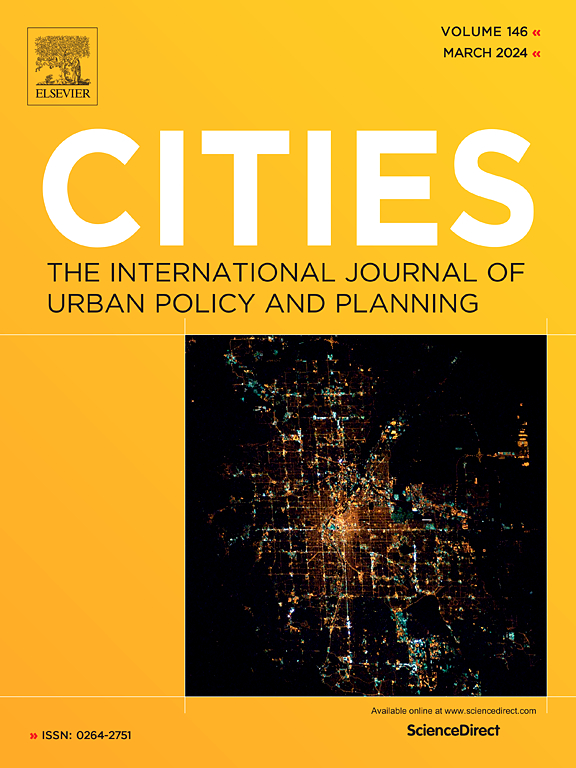Intra-urban relocation patterns and correlation with built environment factors of population by age groups: A case study of Wuhan
IF 6
1区 经济学
Q1 URBAN STUDIES
引用次数: 0
Abstract
Intra-urban residential mobility has become increasingly frequent and is contributing to changes in urban spatial structure with the reform of China's urban housing system. Supported by multi-source data and taking life course theory as a research perspective, this study identifies the relocation network between research spatial units and relocation intensity within research units of residents of different age groups within the 4th ring road of Wuhan. Employing the community detection algorithm and spatial autocorrelation index, the differences in relocation features among different age groups are analyzed; based on the findings of the spatial lag model, a model of the relationship between the built environment factors and relocation intensity is proposed. This study finds that there are differences in relocation network and community structure between residents of different age groups, and the differences exhibit a distribution connected to age groups in their significance levels. Inflow and outflow intensity of residents in different age groups have differences in relocation frequency characteristics and location distribution. Built environment indicators are important influencing factors in relocation decisions, and the type of mechanism by which each factor influences the relocation intensity varies between different age groups.
各年龄组人口的城内迁移模式及其与建筑环境因素的相关性:武汉案例研究
随着中国城镇住房制度的改革,城市内部居住流动日益频繁,并促进了城市空间结构的变化。本研究以多源数据为支撑,以生命历程理论为研究视角,识别了武汉市四环线内不同年龄段居民在研究空间单元间的迁移网络和研究单元内的迁移强度。运用社区检测算法和空间自相关指数,分析了不同年龄组居民搬迁特征的差异;基于空间滞后模型的研究结果,提出了建筑环境因素与搬迁强度的关系模型。研究发现,不同年龄段居民的搬迁网络和社区结构存在差异,且差异在显著性水平上呈现出与年龄段相关的分布。不同年龄段居民的迁入强度和迁出强度在迁入频率特征和地点分布上存在差异。环境建设指标是居民搬迁决策的重要影响因素,各因素对搬迁强度的影响机制类型在不同年龄组之间存在差异。
本文章由计算机程序翻译,如有差异,请以英文原文为准。
求助全文
约1分钟内获得全文
求助全文
来源期刊

Cities
URBAN STUDIES-
CiteScore
11.20
自引率
9.00%
发文量
517
期刊介绍:
Cities offers a comprehensive range of articles on all aspects of urban policy. It provides an international and interdisciplinary platform for the exchange of ideas and information between urban planners and policy makers from national and local government, non-government organizations, academia and consultancy. The primary aims of the journal are to analyse and assess past and present urban development and management as a reflection of effective, ineffective and non-existent planning policies; and the promotion of the implementation of appropriate urban policies in both the developed and the developing world.
 求助内容:
求助内容: 应助结果提醒方式:
应助结果提醒方式:


